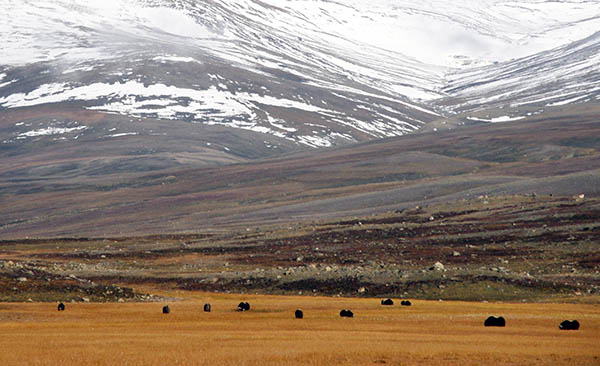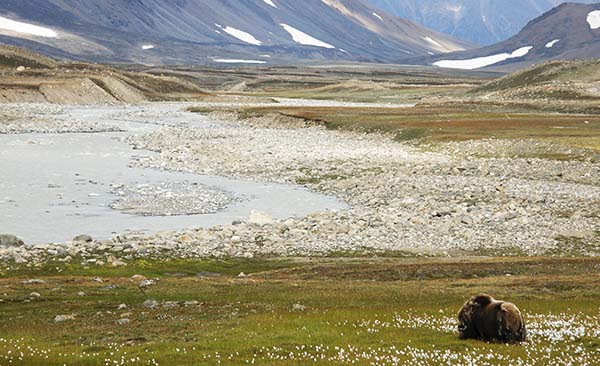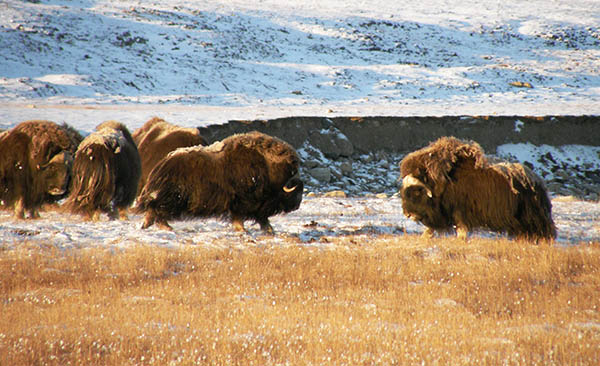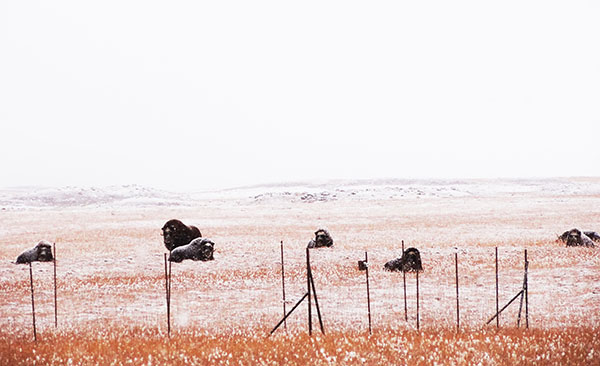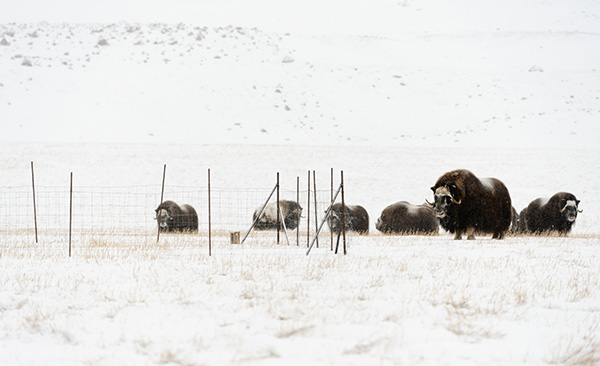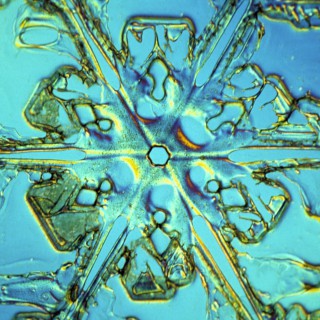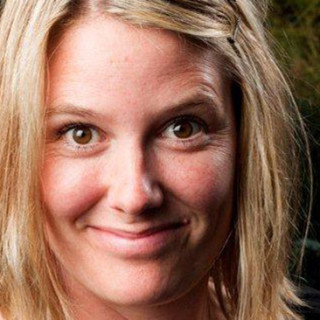Grazing of Arctic wetlands suppress the greenhouse effect
Grazing musk oxen are a characteristic feature of the Arctic tundra. Research has now shown that the animals’ grazing of Arctic wetlands helps to suppress the greenhouse effect. If these grazing animals were no longer present, this could have an impact on the future climate.
A warmer climate has a major impact on the Arctic ecosystem. Extensive research has been carried out, with model calculations of greenhouse gases and the carbon balance in different climate change scenarios, but few researchers have taken into account the role of grazing animals.
Julie Maria Falk and Lena Ström from the Department of Physical Geography and Ecosystem Science at Lund University have done just that in their research in Greenland, on the Arctic tundra where the musk oxen live and graze. The musk ox is adapted to a cold climate. It does not like temperatures above 10°C and can cope with temperatures down to around -50°C. The oxen are dependent on grazing all year round and scrape away the snow to get at their food during the winter.
“We don’t know what will happen to the musk oxen in the future. In this area, which is a national park where hunting is prohibited, the population of musk oxen has increased over the past fifteen years. This is most likely due to a longer growing season and increased biomass as a result of a slightly higher average temperature”, says Julie Maria Falk.
However, in years when there was a harsh winter with a lot of snow, the population declined. Occasional snowy winters are part of the natural variation, but climate models that show a future with even warmer temperatures also show a general increase in precipitation.
“A warmer climate could present major problems for the musk oxen, causing them to starve. In mild winters with large amounts of snow, the snow thaws and refreezes, leading to the formation of ice in the snow cover. The musk oxen cannot break through the ice. Very deep snow is also problematic for them”, explains Julie Maria Falk.
There is therefore a risk of the musk oxen becoming extinct. Julie Marie Falk and Lena Ström are studying how the vegetation and the feedback of the greenhouse gases carbon dioxide and methane are affected in an Arctic with fewer or no grazing animals.
“A warmer climate could present major problems for the musk oxen.”
In 2010 the researchers set up fenced areas that the musk oxen could not enter to graze, and there the gas flows from the ground and the vegetation were measured. The results did not show any significant impact in the first two years, but when the areas had not been grazed for three years, the measurements showed major differences in the gas flows compared with grazed areas.
“We measured lower absorption of carbon dioxide and lower emission of methane. This is probably because the plant composition had changed”, explains Julie Maria Falk.
The researchers saw that the moss had grown strongly in non-grazed areas, which had hindered the growth of those plants that they already know were of greatest importance for the absorption of carbon dioxide and the production of methane. The frequency of these plants had reduced by half.
“Despite the fact that the grazed areas release more methane – a stronger gas than carbon dioxide – this was compensated by higher carbon dioxide absorption than in non-grazed areas”, says Julie Maria Falk.
The researchers have calculated that the net effect of removing grazing animals in the test area in Greenland is that the non-grazed areas only have half the positive effect on global warming.
“Both of the test areas currently serve as ‘carbon sinks’, i.e. they absorb more carbon dioxide than they release. However, if the grazing animals disappear, the plants will only absorb half as much carbon. Less grazing in the Arctic could be of major significance to the future climate, because it could lead to an increase in the amount of carbon dioxide in the atmosphere”, says Julie Maria Falk.
Text: Susanna Olsson
Published: 2014
Facts
-
Arctic ecosystems
-
Arctic ecosystems often act as a ‘carbon sink’. Carbon dioxide is sequestered in vegetation, especially in areas that are grazed by animals such as reindeer or musk oxen. A lot of carbon is also sequestered in areas with permanently frozen ground (permafrost). Because Arctic ecosystems help to reduce the level of carbon dioxide in the atmosphere, they currently have a positive effect on the earth’s climate. A warmer climate with less permafrost could lead to the release of more of the carbon stored in the ground. Greater release of the greenhouse gases carbon dioxide and methane into the atmosphere could in turn lead to a more intensive greenhouse effect and thus an even warmer climate.
-
Carbon balance
-
Carbon balance: distribution of carbon within the ecosystem – carbon is found in the atmosphere, ground, lakes and seas, and is stored in animals and plants. The movement of carbon between these parts of the earth’s entire ecosystem is referred to as the carbon cycle.


